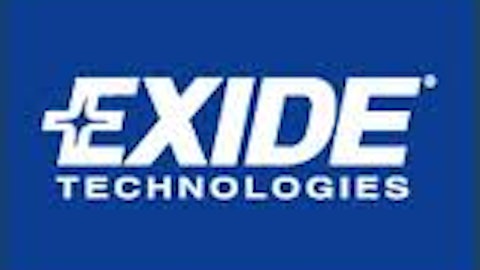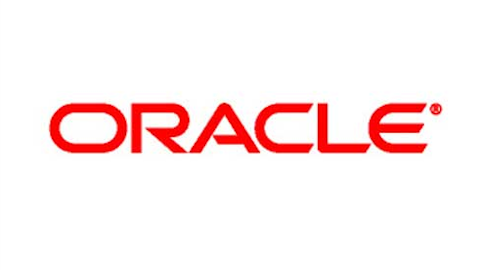I’ve read multiple positive articles about the future of salesforce.com, inc. (NYSE:CRM). However, for every positive article, there are multiple negative comments about the company’s use of shares to reward employees. Many people that avoid the stock would cite the company’s use of stock options. However, there are several other issues standing in the way of the company’s success.

Everyone Wants A Part Of The Cloud
salesforce.com, inc. (NYSE:CRM) is generally seen as a leader in the use of cloud technologies to improve customer’s sales, customer service, and social media use. The company has signed agreements with many multi-billion dollar companies to use their cloud services. Whereas a few years ago, Salesforce was leading the field with much less competition, today companies from Microsoft Corporation (NASDAQ:MSFT), to Oracle Corporation (NASDAQ:ORCL), and SAP AG (ADR) (NYSE:SAP), have entered the field.
Oracle Corporation (NASDAQ:ORCL) and SAP have targeted cloud usage as a way to grow their earnings, and help their customers grow their business. Microsoft is not only increasing cloud integration into their server solutions, but the company’s Office 365 offering has the potential to disrupt the industry. If customers decide that Office 365 offers a good value, this could present a real challenge to salesforce.com, inc. (NYSE:CRM).
The Elephant In The Room
The concern about huge stock options wouldn’t be a huge deal if Salesforce’s growth were steady or increasing. The first issue facing Salesforce.com is the company’s growth is slowing down.
The Americas represents 69% of Salesforce’s revenue. From January 2011 to January 2012, revenue growth was 41%. Looking at the October 2011 to October 2012 timeframe, revenue growth was 38%. In the January 2011 to January 2012 year, the company saw sales growth of 34%. As you can see, salesforce.com, inc. (NYSE:CRM) is seeing a slowdown in its biggest market.
A second problem with the company is, what should be a huge growth market, Asia Pacific, is showing a slowdown too. You would expect that at just 12.3% of revenue, that this region would be a source of fast growth. Last year, this region saw 28% revenue growth and represented 14% of revenue. This year, growth slowed to 22%, and represented 12.30% of revenue. The bottom line is, Salesforce is losing sales momentum in its biggest market, and what should be its biggest growth opportunity at the same time.
With A P/E of 90, Having The Lowest Of Any Measure Is Unacceptable
With shares trading for about 90 times projected earnings, you would hope Salesforce would lead the way in many financial metrics, unfortunately that is not happening.
The third overall issue is, In the current quarter, Salesforce generated $0.28 of free cash flow per dollar of sales, which was lower than any of their peers. While this would be impressive in another industry, salesforce.com, inc. (NYSE:CRM)’s peers are doing better. SAP generated an impressive $0.62 of free cash flow per dollar of sales, Oracle Corporation (NASDAQ:ORCL) generated $0.34 of free cash flow by the same measure. On the surface, Microsoft appears to have underperformed by generating $0.18 of free cash flow per dollar of sales in the current quarter. However, in the last four quarters, Microsoft has averaged $0.37 of free cash flow per dollar of sales. As you can see, Salesforce has some work to do to match the relative free cash flow of its peers.
Fourth, the market is valuing Salesforce at a higher level than their peers based on the cash on their balance sheet relative to their market cap. The only company with a lower percentage of net cash and investments relative to market cap is SAP with 4.52% of their market cap. represented by net cash. salesforce.com, inc. (NYSE:CRM) comes in second with 6.72% of their market cap. represented by net cash and investments.
Oracle Corporation (NASDAQ:ORCL) appears to be a better value with 9.79% of their market cap. in cash and investments. Microsoft leads the pack, with nearly 28% of their market cap. represented by net cash and investments. Since all of these companies are generating more free cash flow per dollar of sales, this disconnection in market cap. valuation is a big deal.
The Problem Everyone Knows Just Makes All Of The Above Worse
The fifth problem Salesforce.com is facing is, the company’s share count is growing fast due to stock options. On a year-over-year basis, diluted shares are up over 8%. In part because of this growth, though revenue was up 32%, EPS increased just 18.6%.
While analysts are calling for almost 30% EPS growth in the next few years, I don’t know if this is possible. The company’s current quarter is a good example of the challenges. Revenue was up 32%, but EPS didn’t come close to this growth. For Salesforce to achieve 30% EPS growth, the company will have to improve on its use of shares as an award for performance.
While Oracle Corporation (NASDAQ:ORCL) and SAP are both expected to grow EPS by 11% or more in the next few years, relatively speaking the most attractive competitor is probably Microsoft. The company pays the highest yield, sells for just 10 times projected earnings, and has the largest percentage of market cap. represented by cash. Though Microsoft doesn’t have the same growth rate as salesforce.com, inc. (NYSE:CRM), the company also doesn’t issue shares like Salesforce either. With Salesforce selling for 90 times projected earnings, growth slowing, lower relative free cash flow, and a growing share count, the only clouds in Salesforce’s future are rainclouds.
Chad Henage owns shares of Microsoft. The Motley Fool recommends Salesforce.com. The Motley Fool owns shares of Microsoft and Oracle.

